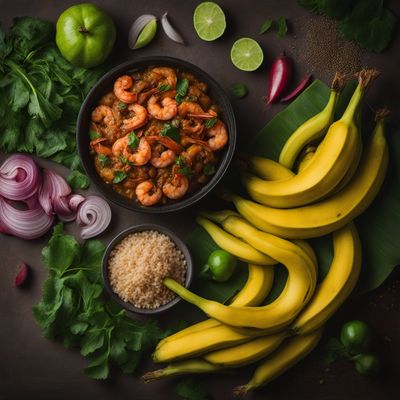
Ingredient
Freshwater crayfishes
The Delicacy of Freshwater Crayfish: A Culinary Treasure from the Depths
Freshwater crayfishes, also known as freshwater lobsters or crawfish, are crustaceans that thrive in freshwater bodies such as lakes, rivers, and streams. They have a distinct appearance with elongated bodies, segmented tails, and a pair of large pincers. These crustaceans are typically small in size, ranging from 3 to 6 inches in length. Their shells are usually dark brown or greenish-brown, providing a protective covering for their tender, succulent meat. The meat itself is firm, sweet, and slightly nutty in flavor, with a texture that is both tender and slightly chewy. Freshwater crayfishes are highly versatile and can be used in a variety of dishes, including soups, stews, pastas, and even grilled or fried preparations.
Origins and history
Freshwater crayfishes have a rich history and cultural significance in various parts of the world. They are native to freshwater habitats in North America, Europe, Australia, and parts of Asia. In North America, they have been a staple food source for Native American tribes for centuries. In Europe, crayfish became popular during the Middle Ages and were considered a delicacy among the nobility. Today, they are widely cultivated and enjoyed in many countries, with regional variations in preparation and culinary traditions.
Nutritional information
Freshwater crayfishes are a low-calorie and high-protein ingredient, making them a nutritious choice. They are rich in essential nutrients such as omega-3 fatty acids, vitamin B12, iron, and selenium.
Allergens
Freshwater crayfishes are known to cause allergies in some individuals, particularly those with shellfish allergies. It is important to exercise caution and seek medical advice if you have a known shellfish allergy.
How to select
When selecting freshwater crayfishes, look for specimens that are lively and active. Choose crayfishes with intact shells, avoiding any that have cracks or damage. Freshwater crayfishes should have a fresh, slightly briny smell, without any strong or unpleasant odors.
Storage recommendations
To maintain the freshness and quality of freshwater crayfishes, store them in a cool environment with temperatures between 32°F and 40°F (0°C and 4°C). It is best to keep them alive until ready to use, storing them in a container with damp newspaper or a wet towel to keep them moist. Cooked crayfishes should be refrigerated and consumed within 2-3 days.
How to produce
Freshwater crayfishes can be produced by creating suitable habitats in freshwater bodies such as ponds or tanks. Adequate water quality, temperature, and hiding places are essential for their growth and reproduction. Consult local fisheries or aquaculture experts for specific guidance on producing freshwater crayfishes in your area.
Preparation tips
Before cooking freshwater crayfishes, it is important to clean them thoroughly. Rinse them under cold water, removing any dirt or debris. To cook, they can be boiled, steamed, grilled, or sautéed. To enhance their flavor, consider marinating them in a mixture of herbs, spices, and citrus juices before cooking. Freshwater crayfishes are commonly used in dishes such as crayfish boils, étouffée, bisques, and pasta dishes.
Culinary uses
Freshwater crayfishes are widely used in various cuisines around the world. They are commonly incorporated into dishes such as crayfish boils, étouffée, bisques, paellas, pasta dishes, and salads. Their delicate flavor and tender meat make them a versatile ingredient in both traditional and contemporary recipes.
Availability
Freshwater crayfishes are commonly available in regions with suitable freshwater habitats, including North America, Europe, Australia, and parts of Asia.
More ingredients from this category
Recipes using Freshwater crayfishes

Afang Soup with a Twist
Savory Delight: Afang Soup with a Modern Twist

Boiled Crawfish with Spicy Cajun Sauce
Fiery Delight: Spicy Cajun Boiled Crawfish

Polynesian-style Spicy Crawfish Boil
Tropical Delight: Polynesian Spiced Crawfish Boil

Ndolé with Shrimp and Plantains
Savory Delight: Shrimp and Plantain Ndolé